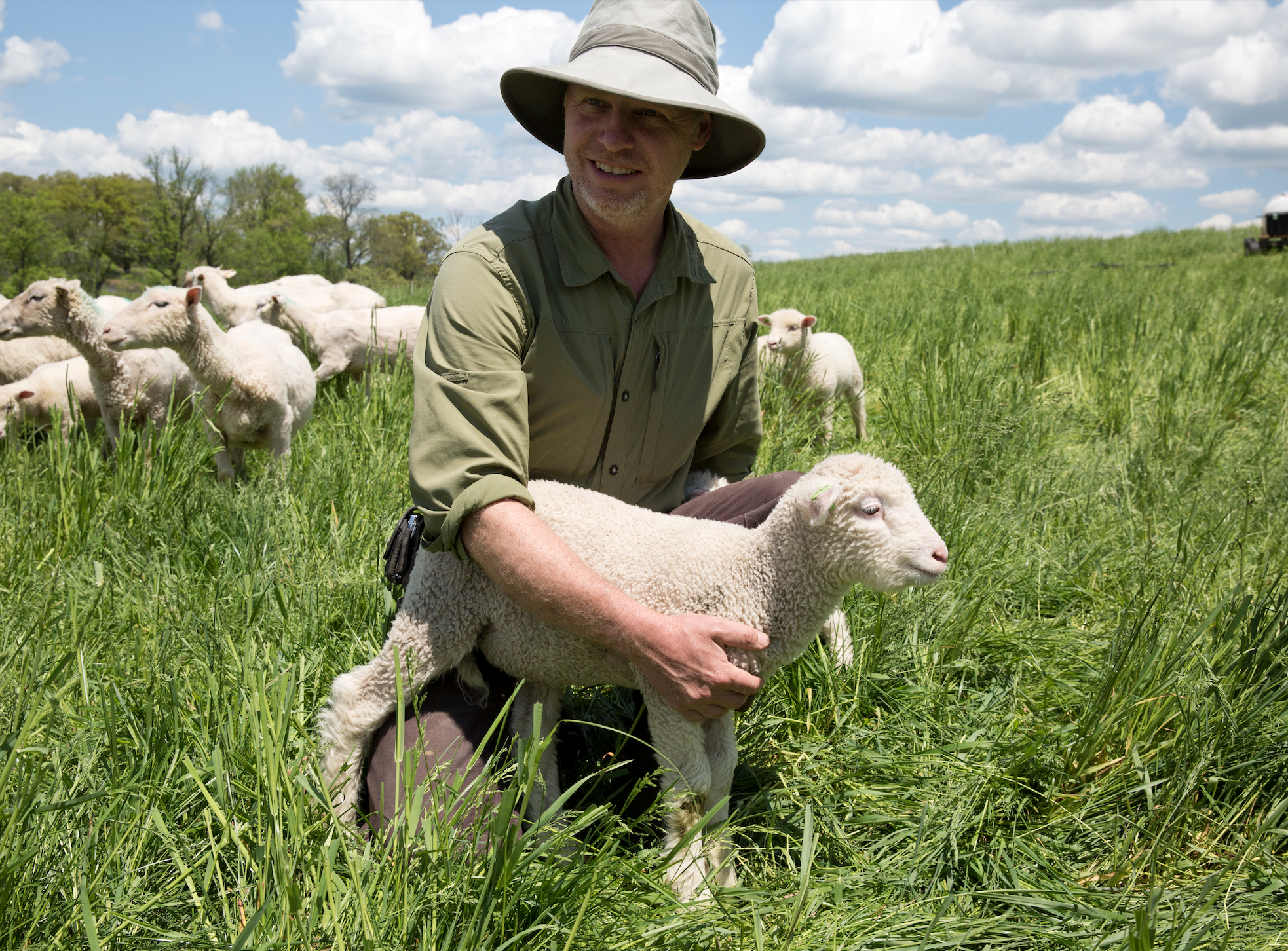Stone Barns' Craig Haney Talks About Animal Husbandry, The Great Plains

Craig Haney works with a number of animals and manages pastureland at a famed New York farm.
In Food Republic's new series Game Changers, we take a close look at a few of the individuals working to change the way we view the food industry. Next up is animal farmer Craig Haney.
For over a decade Craig Haney has handled the animals at New York's famed farm Stone Barns Center for Food and Agriculture in the Pocantico Hills, a job that allows him to work with sheep, chickens, turkeys, pigs, geese, goats, honey bees and — once in a while — cattle. As the Livestock Farm Director, he not only makes sure that the animals treated humanely and live the most natural lives possible, but also keeps the 23 acres of pastureland healthy by practicing rotational grazing, a method that's as old as time but largely ignored.
Before he ended up at Stone Barns, the 48-year-old Catskills native jumped around to different jobs including the Farmers' Museum in Cooperstown, Meadow Raised Meats and other farm-based operations, learning various farming styles along the way. Then, in 1997, he partnered with another farmer and started Skate Creek Farm. He ran it until he decided to step into a full time job at Stone Barns in 2004, and hasn't looked back since. In fact, Haney likes it there so much, he and his wife Gabrielle, their five-year-old daughter Bess and their sheep and turkey-herding Border Collie Miss live a scant mile from the farm. And he wouldn't have it any other way.
Since you grew up in a family of farmers, did you know that was the path you would eventually take?
Not until my early twenties. I went 'away' for college [to the University of Michigan where he studied American social history] and began realizing just how important the landscape and agriculture of upstate New York was to me. My first agricultural job was working for a sugar maker. I fell in love with the work and the farmer became quite a mentor. I then worked at an agricultural history museum throughout my twenties. We farmed with oxen and horses, grew some crops and raised animals. I loved the work and continued looking for ways to have my own agricultural endeavor. I worked on some larger dairy farms too and knew that I wanted something different. It wasn't until there were initiatives in the late 90s to raise animals on pasture that I thought I could make a living farming on my own.
What made you decide to go the organic route when it comes to farming?
I've never been comfortable working with potential poisons. And I like the challenge of embracing the complexity of life and raising animals appropriately within the ecology of a place.
What is rotational grazing and why is it important?
At its most basic, it's moving animals around the farm, allowing the grasses and legumes time to recover between grazings. The crew at Stone Barns dedicates over 1,200 hours each year to moving animals through temporary paddocks that we create to both protect the animals and the grass while it recovers between grazings. An appropriate analogy is the movement of the bison across the Great Plains. The large herbivores would move as a compact herd across the grasslands, grazing, defecating and trampling as they moved on. They wouldn't return right away to that area of the grasslands. That's the model that we're emulating on a farm scale. That dynamic disruption, coupled with grass rest and recovery, allowed the grasslands to flourish. And the maintenance of healthy grasslands provides habitat, sequesters carbon and can allow us to raise fiber, meat and milk that is ecologically sustainable.
What's the special trick we need to know about your job?
I believe it takes a fine balance of dogged confidence and humility to be a good practitioner of animal husbandry.
When you are teaching about farming, are there some things you really try and drive home to your students?
Let your passion help direct you towards the animals: the types, species, breeds, looks, etc. that you'd like to raise. Allowing animals to express more of their instincts will often require an inordinate amount of sacrifice. And by passionately committing themselves, they'll find the strength to be good animal husbands.
What do you think is the future of raising farm animals?
Ruminant animals, beef cattle, dairy cattle as well as sheep and goats, that gather a great preponderance of their diet from grass and legumes, fresh, ensiled or dried as hay. Higher welfare standards. Higher costs and less meat eating both for people's health and ecological health.
And finally, with all those tasty creatures in your care, do you have a favorite cut of meat and preparation?
For me, the egg comes first. I like low, slow-cooked eggs in butter with just a little salt and pepper along with a slice of Heidelberg bread with Kreimhold cultured butter.
This post is brought to you by our friends at Whole Foods Market
Read these Game Changer columns on Food Republic:


